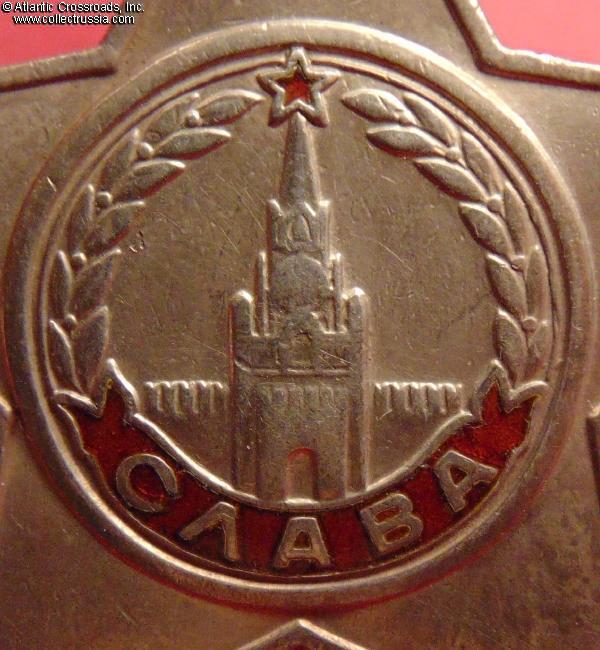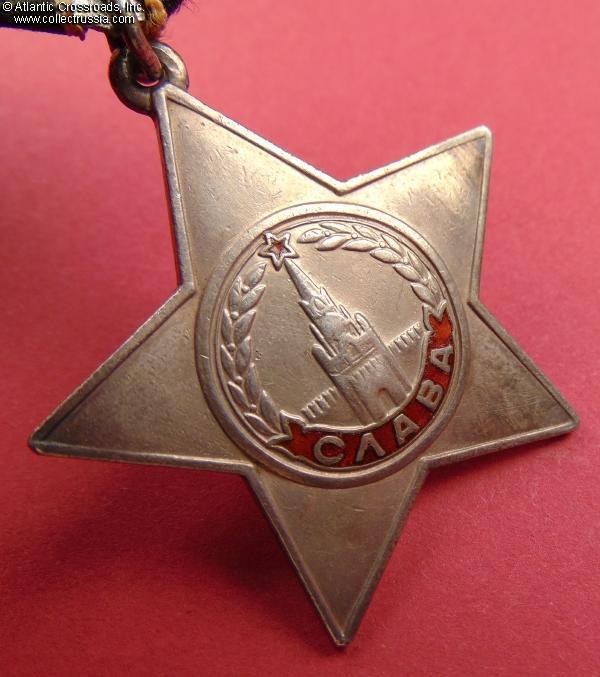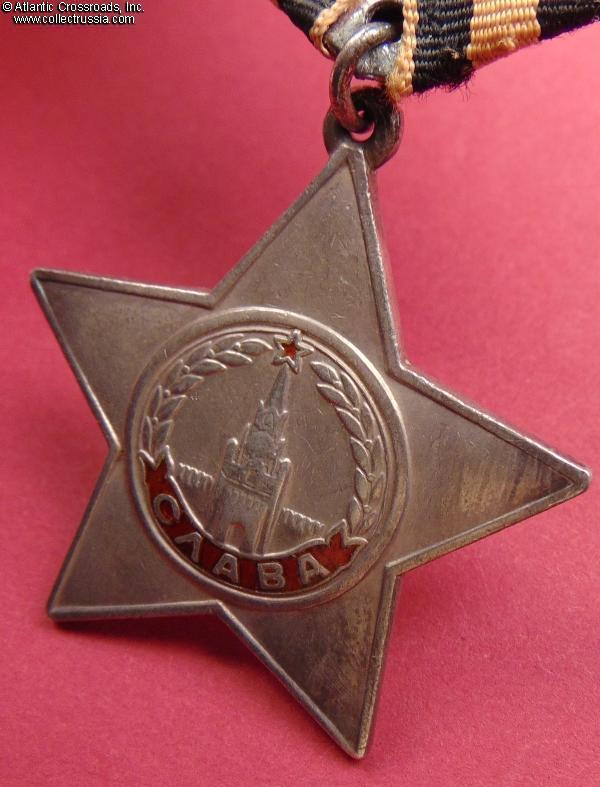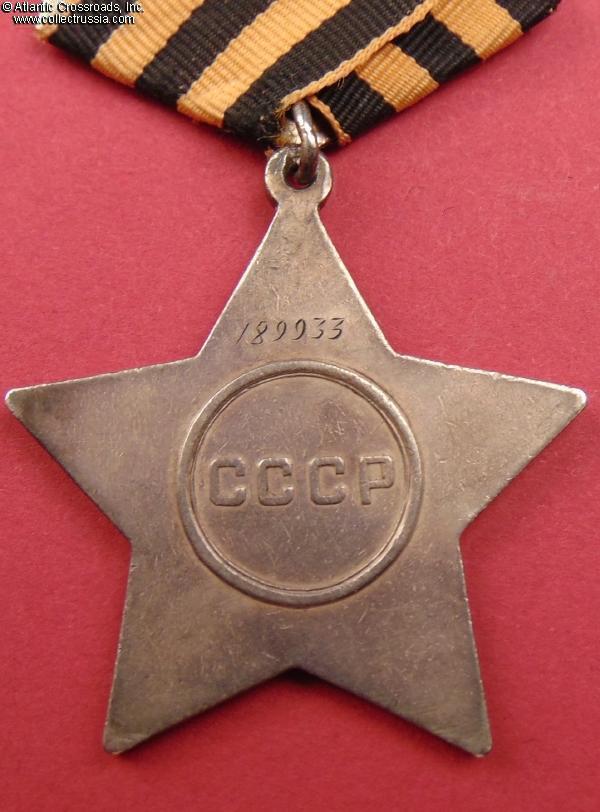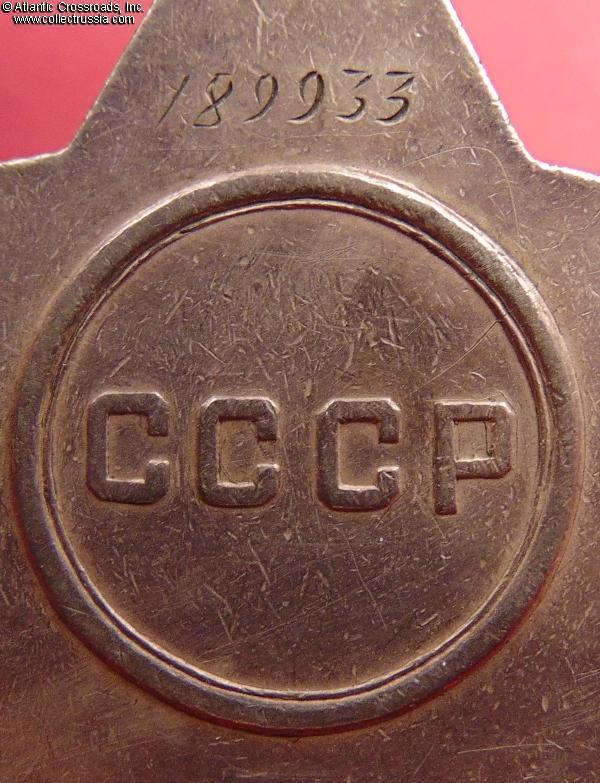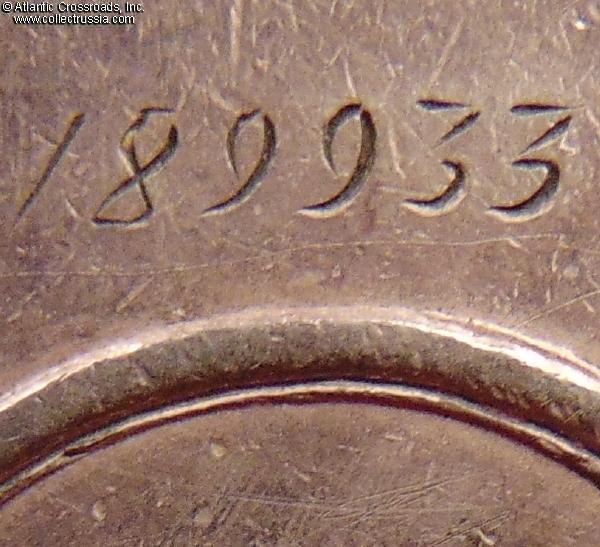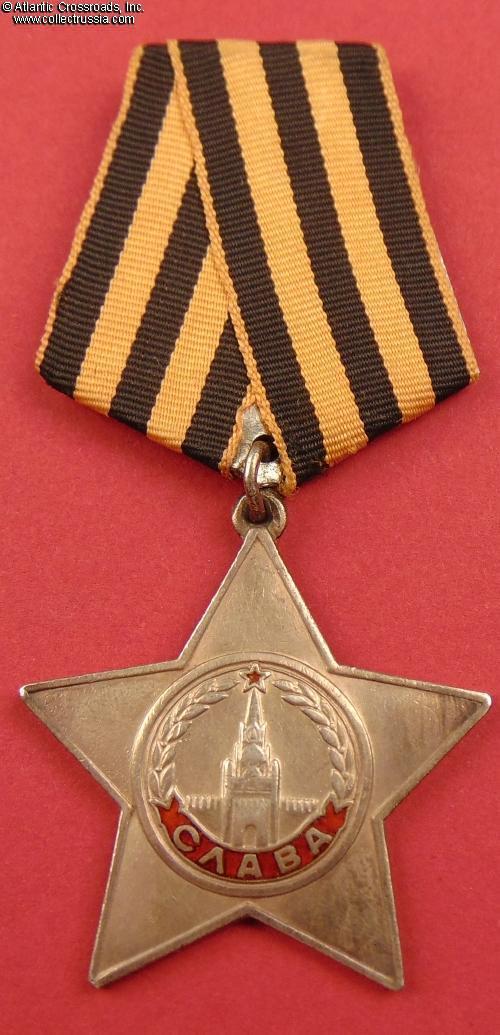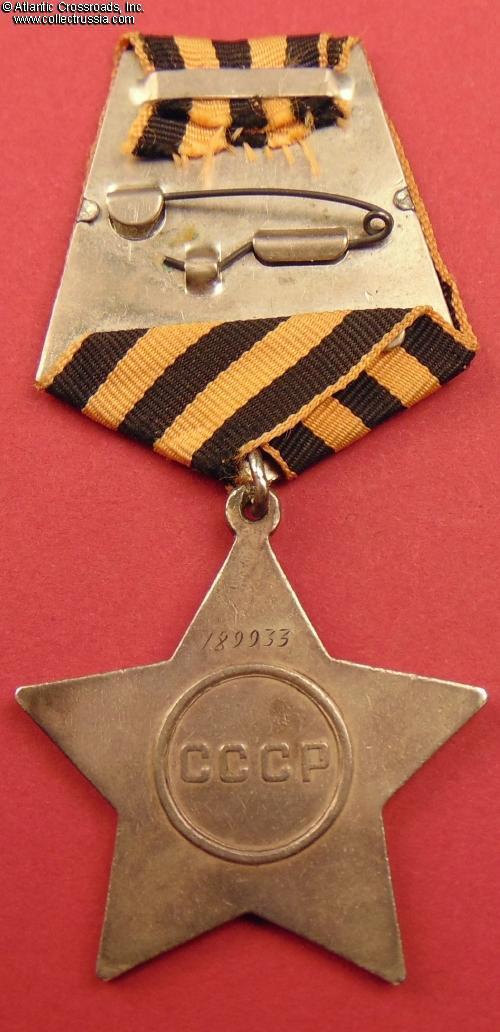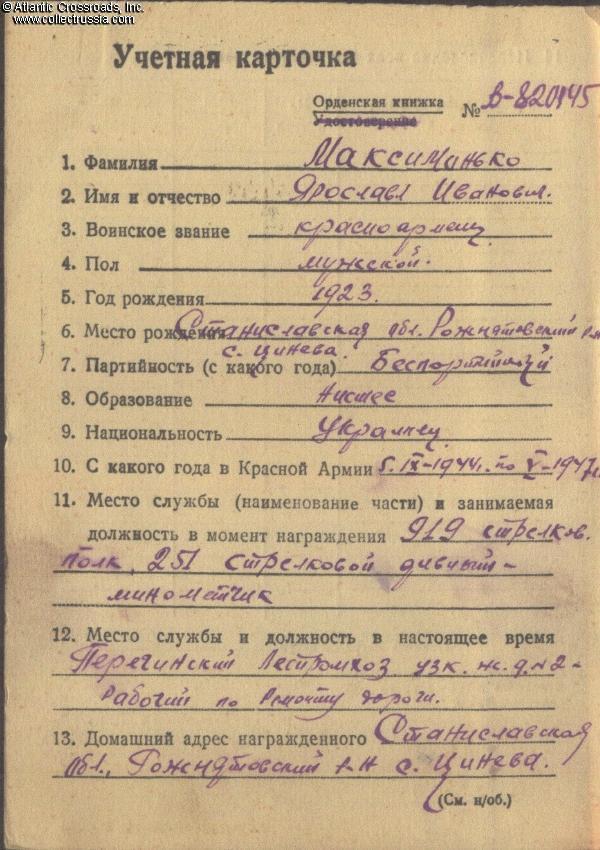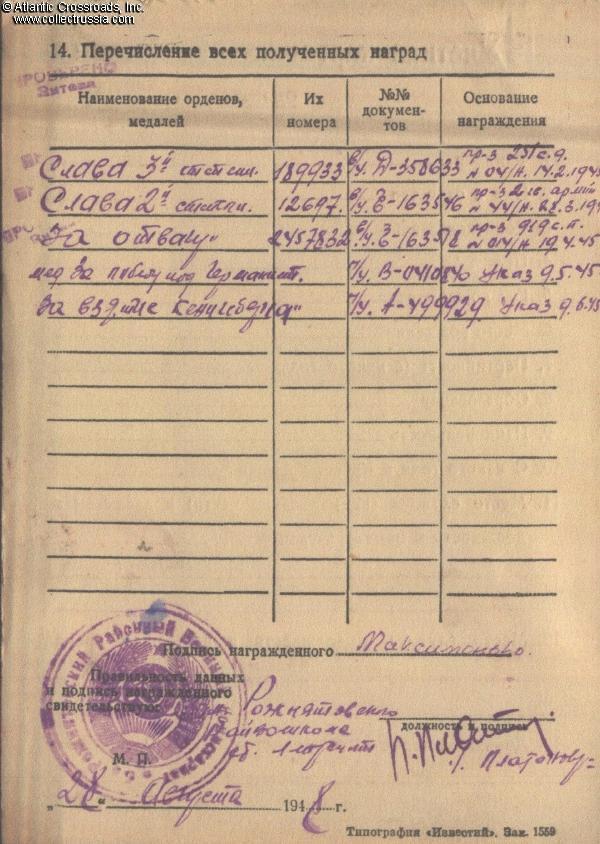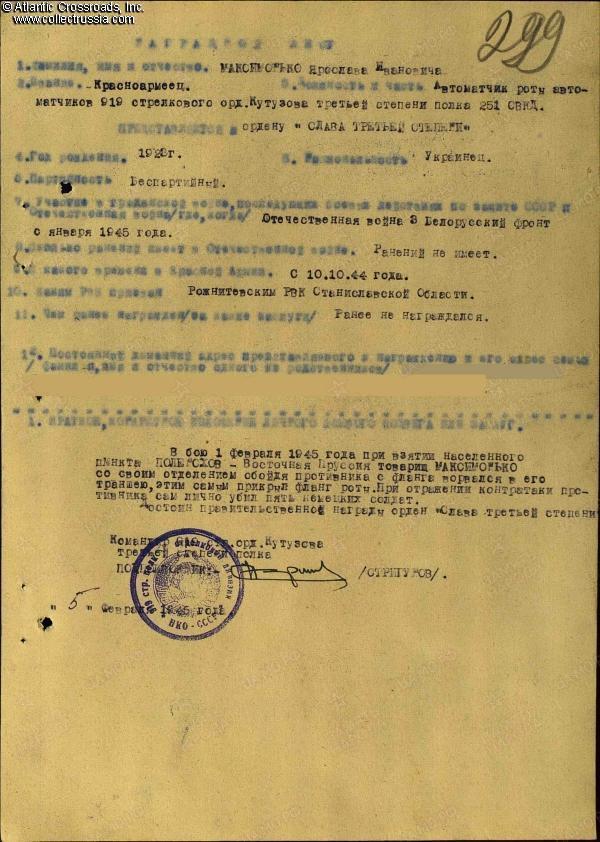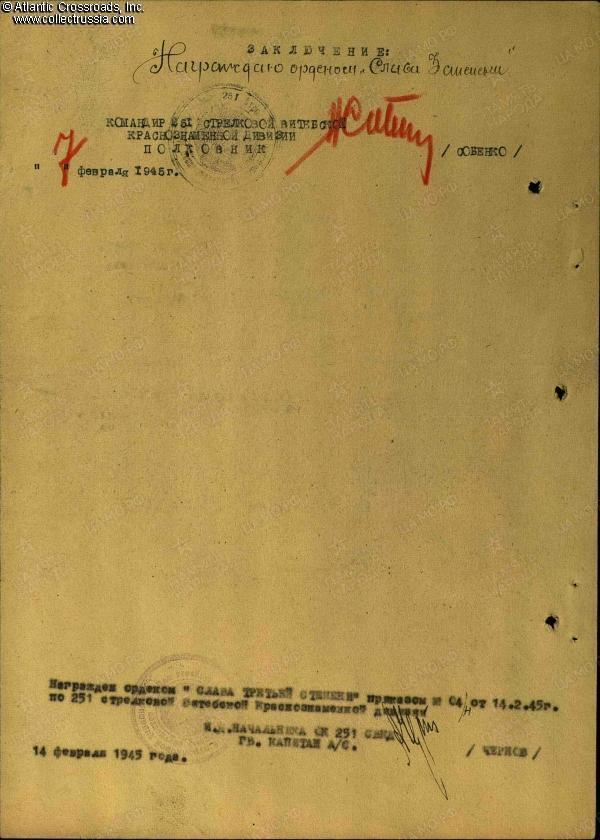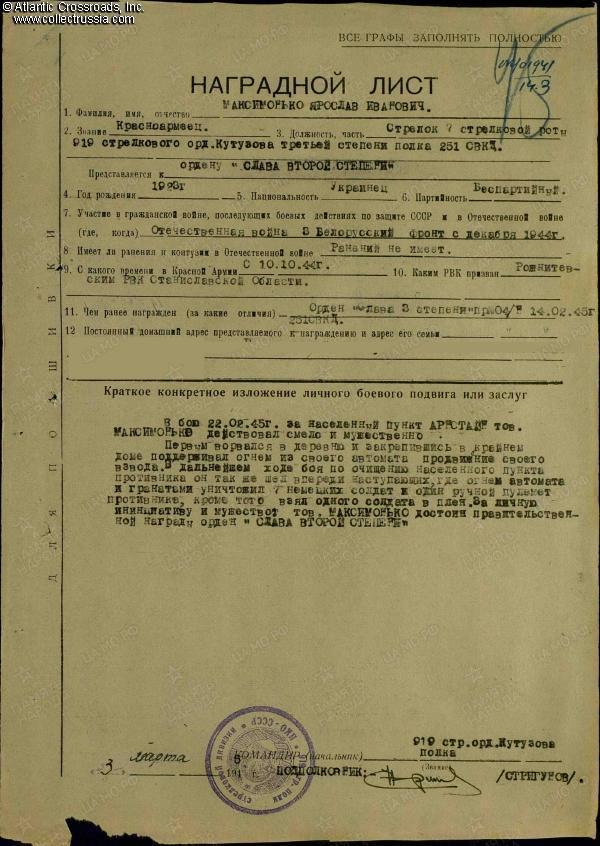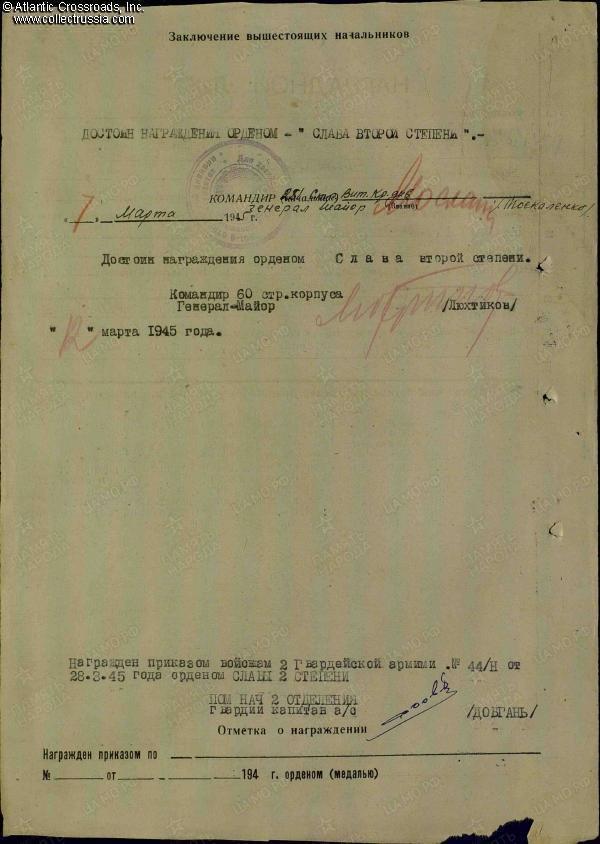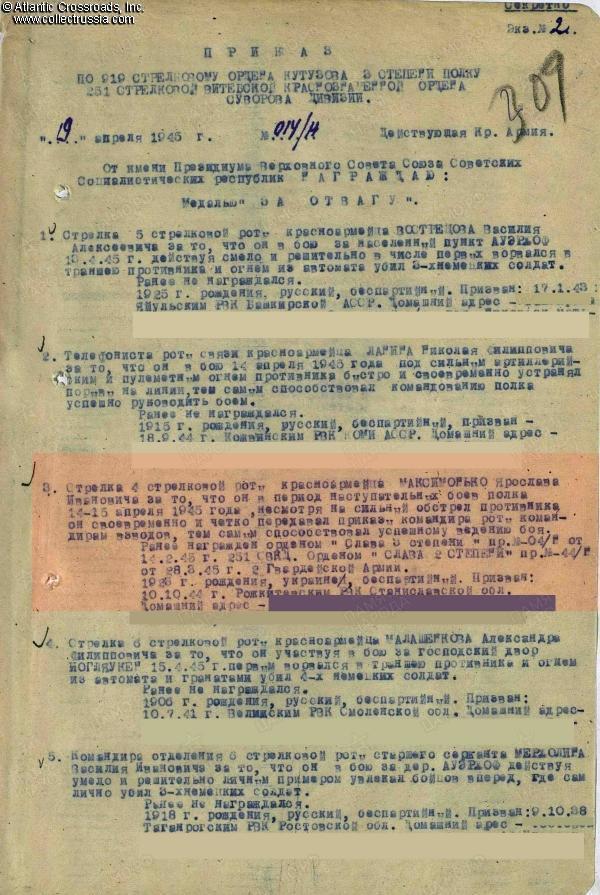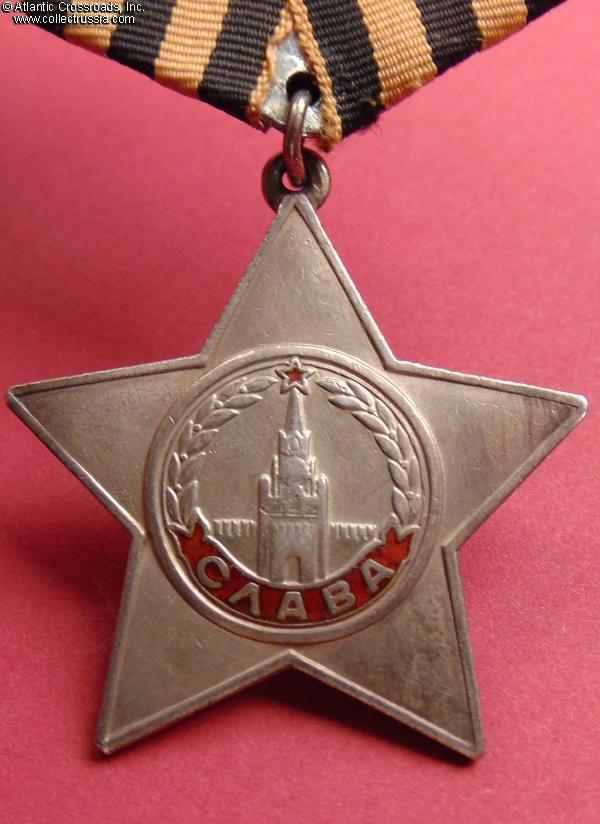
Order of Glory, 3rd class, Type 2, Variation 1, #189933, awarded on 14 February 1945 to Private Yaroslav Maksimonko (Ярослав Иванович Максимонько), 919th Rifle Regiment, 251st Rifle Division, 39th Army, 3rd Belorussian Front.
Silver, enamel; measures 49.5 mm in height incl. eyelet, 47.2 mm in width; weighs 23.4 g not including the suspension and connecting link. This version of the order features the Kremlin clock with a "smooth" face without hour and minute hands or numerals. According to Mondvor.narod.ru, most specimens of this sub-variation have serial numbers in the range from 130000 - 340000.
In excellent condition. The enamel on both the star and scroll has just a tiny amount of surface flaking unnoticeable to the naked eye, otherwise perfect and shows a beautiful luster. The central medallio
Silver, enamel; measures 49.5 mm in height incl. eyelet, 47.2 mm in width; weighs 23.4 g not including the suspension and connecting link. This version of the order features the Kremlin clock with a "smooth" face without hour and minute hands or numerals. According to Mondvor.narod.ru, most specimens of this sub-variation have serial numbers in the range from 130000 - 340000.
In excellent condition. The enamel on both the star and scroll has just a tiny amount of surface flaking unnoticeable to the naked eye, otherwise perfect and shows a beautiful luster. The central medallion is well-preserved, having only some minuscule dings and a very minor amount of wear to its raised points; the details of the artworks are very well-preserved and crisp. The silver shows a very attractive even toning throughout. Comes on an early post-war suspension device, a two-layer model in steel with an integral catch of the pin. The perfectly clean ribbon is relatively recent but shows some use. The connecting link appears to be original; its ends are joined with solder.
Yaroslav Maksimonko was born in 1923 in a village in the Stanislaw area (modern day Ivano-Frankivsk, western Ukraine, it was then a part of eastern Poland that would be annexed by the Soviet Union in 1939). It is unclear if Maksimonko remained in his native area during the German occupation, but he was drafted into the Red Army on 5 September 1944, soon after the region was retaken by the Red Army. It therefore seems likely that he was one of the millions of "booty Ukrainians" pressed into military service as the frontline moved west in 1944.
At the end of January - beginning of February 1945, Maksimonko's regiment, a part of the 39th Army, 3rd Belorussian Front, was engaged in fierce fighting in the Masurian Lakes area of East Prussia (about 100 miles south-east of Koenigsberg). On 1 February 1945, during the capture of the settlement of Polerokhov (the name is transliterated from the Russian award document), Maksimonko with his detachment, having flanked the enemy's defense position, broke into their trench thus securing his unit's flank. While repelling an enemy counterattack, Maksimonko personally killed five German soldiers. For these actions, Private Maksimonko was recommended for the Order of Glory 3rd cl. by his regiment commander. His other wartime decorations were Order of Glory 2nd cl. (#12697, March 1945) and Medal for Valor (#2457832, April 1945).
The Order of Glory 2nd cl. was awarded for his actions on 22 February 1945 during the capture of the village of Arnstein (the name is transliterated from the Russian award document). Maksimonko was the first to enter the village where he occupied the first house and supported the advance of his platoon with submachine gun fire. In the final stages of the skirmish, he took point in the attack and personally killed seven enemy troops, destroyed a machine gun, and captured one soldier prisoner. Maksimenko's final award of the war was the Medal for Valor which he earned in mid-April 1945, when his unit was clearing the Samland Peninsula following the capture of Koenigsberg.
Interestingly, Maksimonko remained in the military for much longer than most other Soviet enlisted soldiers, getting discharged only in May 1947, two years after the end of the Patriotic War. At the time of his release from active duty, he was still just a Private despite having three combat decorations - likely due to the fact that he had only an elementary school education. Upon his discharge, Maksimonko returned to his native Stanislaw region and as of August 1948, was working there on a road repair crew.
Note that Masurian Lakes, the place where Maksimonko earned his Order of Glory 3rd cl., was the same area where the Germans had inflicted catastrophic losses on the Imperial Russian Army in WW1. One the opening major engagements of that war, the Battle of Tannenberg that took place from 23-30 August 1914, resulted in an almost complete destruction of the Russian 2nd Army. A series of follow-up battles at the Masurian Lakes then led to ousting of the Russian 1st Army from East Prussia. Through the rest of the war and until its demise in 1917, the Russian Empire never fully recovered from the political and military effects of these two disasters. In 1944, thirty years and one World War later, the Russians had their revenge.
Research Materials: b/w photocopy of the award record card and award commendations / decrees for all three WW2 decorations; a third-party English translation of the award record card, award commendation for the Order of Glory 3rd cl. (in full), and award commendation / decree for the Order of Glory 3rd cl. and Medal for Valor (relevant parts only).
$325.00 Add to cart

